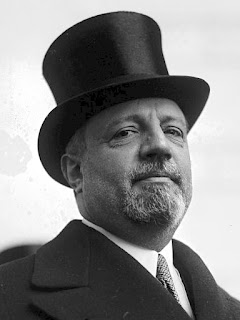Project "Venice" Ofeliya Magar
Venice is a city in northeast Italy. Venice is the capital of the Veneto region.
 Cannaregio
Cannaregio Castello
Castello Dorsoduro
Dorsoduro San Marco
San Marco San Polo
San Polo Santa Croce
Santa Croce
Venice
Venice is a city in northeast Italy. Venice is the capital of the Veneto region.
The city is divided into six areas or
"sestiere". These are Cannaregio, San Polo, Dorsoduro (including the
Giudecca and Isola Sacca Fisola), Santa Croce, San Marco (including San Giorgio
Maggiore) and Castello (including San Pietro di Castello and Sant'Elena). Each
sestiere was administered by a procurator and his staff.
Each sestiere
has its own house numbering system. Each house has a unique number in the
district, from one to several thousand, generally numbered from one corner of
the area to another, but not usually in a readily understandable manner.
Venice is one of
the most important tourist destinations in the world, due to the city being one
of the world's greatest and most beautiful cities of art. The city has an
average of 50,000 tourists a day.
Tourism has been
a major sector of Venetian industry since the 18th century, when it was a major
center for the Grand Tour, due to its beautiful cityscape, uniqueness, and rich
musical and artistic cultural heritage. In the 19th century, it became a
fashionable centre for the rich and famous, often staying or dining at luxury
establishments such as the Danieli Hotel and the Caffè Florian.
In the 1980s, the Carnival of Venice
was revived and the city has become a major centre of international conferences
and festivals, such as the prestigious Venice Biennale and the Venice Film
Festival, which attract visitors from all over the world for their theatrical,
cultural, cinematic, artistic, and musical productions.
The Carnival of
Venice is held annually in the city, starting around two weeks before Ash
Wednesday and ends on Shrove Tuesday. The carnival is closely associated with
Venetian masks.
The Venice Film
Festival is the oldest film festival in the world. Founded by Count Giuseppe
Volpi di Misurata in 1932, the festival has since taken place every year in
late August or early September on the island of the Lido, Venice, Italy.
Screenings take place in the historic Palazzo
del Cinema on the Lungomare Marconi. It is one of the world's most prestigious
film festivals and is part of the Venice Biennale.
Today, there are
numerous attractions in Venice, such as St Mark's Basilica, the Grand Canal,
and the Piazza San Marco. The Lido di Venezia is also a popular international
luxury destination, attracting thousands of actors, critics, celebrities, and
mainly people in the cinematic industry. The city also relies heavily on the
cruise business.
The classical Venetian boat is the gondola, although
it is now mostly used for tourists, or for weddings, funerals, or other
ceremonies. Many gondolas are lushly appointed with crushed velvet seats and
Persian rugs. The main transportation means are motorised waterbuses
(vaporetti), which ply regular routes along the major canals and between the
city's islands, and private boats.
Azienda Consorzio Trasporti Veneziano (ACTV) is the
name of the public transport system in Venice. It combines land transportation,
with buses, and canal travel, with water buses (vaporetti). In total, there are
25 routes that connect the city.
Venice is serviced by regional and national trains,
which can connect the city to Rome in 3.5 hours and to Milan in 2.5 hours.
Florence and Padua are two of the stops between Rome and Venice.
Venice has a rich and diverse architectural style, the
most famous of which is the Gothic style. Venetian Gothic architecture is a
term given to a Venetian building style combining use of the Gothic lancet arch
with Byzantine and Arab influences. The style originated in 14th-century
Venice, where the confluence of Byzantine style from Constantinople met Arab
influence from Moorish Spain. Chief examples of the style are the Doge's Palace
and the Ca' d'Oro in the city. The city also has several Renaissance and
Baroque buildings, including the Ca' Pesaro and the Ca' Rezzonico.
The city of Venice in Italy has played an important
role in the development of the music of Italy. The Venetian state – i.e., the
medieval Maritime Republic of Venice – was often popularly called the
"Republic of Music"
During the 16th century, Venice became one of the most
important musical centers of Europe, marked by a characteristic style of
composition (the Venetian school) and the development of the Venetian
polychoral style under composers such as Adrian Willaert, who worked at St
Mark's Basilica. By the end of the century, Venice was famous for the
splendor of its music, as exemplified in the "colossal style" of
Andrea and Giovanni Gabrieli, which used multiple choruses and instrumental
groups.
Venice was also the home of many famous composers
during the baroque period, such as Antonio Vivaldi, Ippolito Ciera, Giovanni
Picchi, and Girolamo Dalla Casa, to name but a few.
Vocabulary
Divided - Разделить
Unique – Уникальный
District - Район
Corner - Угол
Uniqueness - Уникальность
Heritage - Наследие
Luxury - Люкс
Establishments - Учреждения
Revived - Ожил
Prestigious - Престижный
Attract - Привлечь
Production - Производство
Associated - Связанные
Held - Проведены
Prestigious - Престижный
Destination - Назначения
Relies - Полагается
Cruise - Круиз
Wedding - Свадьба
Funeral - Похороны
Lushly - Привлекательная
Appointed - Назначен
Crushed - Раздавил
Persian - Персидский
Combines - Сочетает в себе
Land - Земля
Serviced - Мелкий
Diverse - Разнообразные
Term - Срок
Combining - Объединение
Confluence - пересечение
Medieval – Средневековый
Composition - Состав
Composers - Композиторы
Splendor - Великолепие
Exemplified - Примером
Multiple - Несколько
Choruses
- Хоры
Video:


















Комментариев нет:
Отправить комментарий